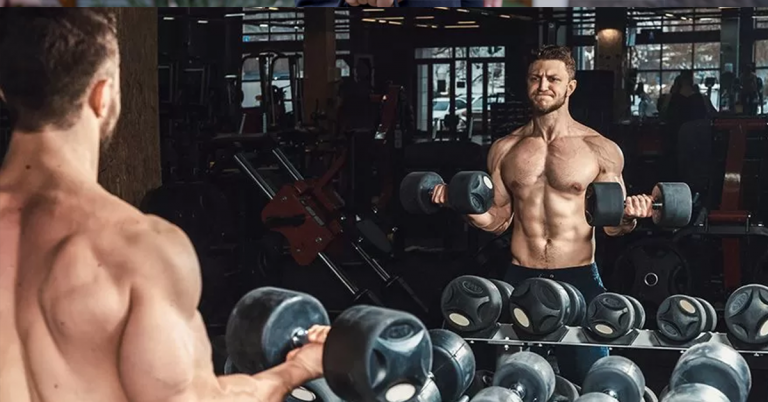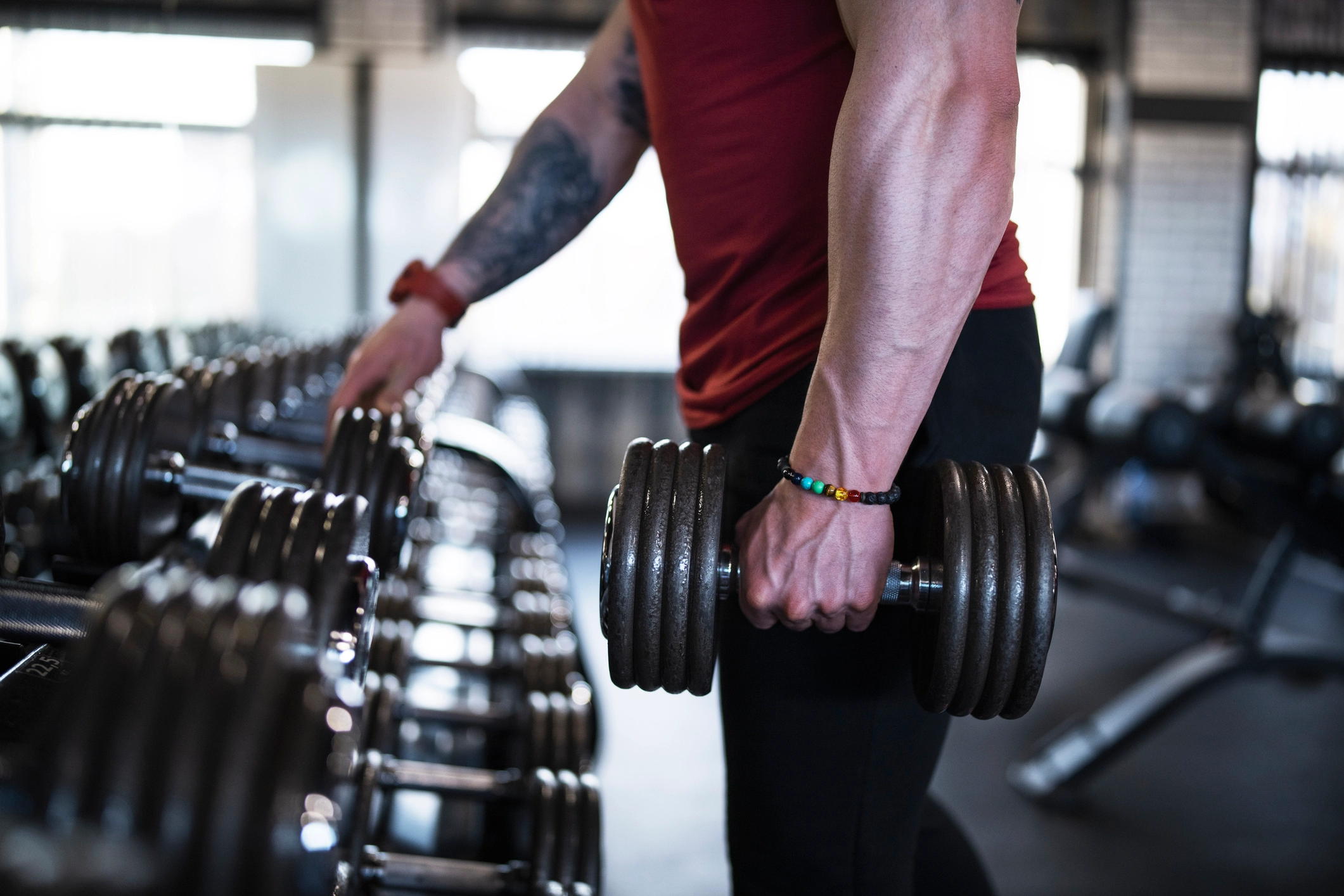There comes a time in one’s workout journey when the notable changes in physique and fitness level lead a person to begin wondering about something bigger. That something bigger is, of course, bodybuilding.
Maybe you’ve contemplated bodybuilding in passing after seeing the bulging muscles in your online instructor’s videos. Perhaps you’ve done a little research, looking into what all would be involved in transitioning into one of those vaguely superhuman seeming people you admire. Often, this is where our interest in bodybuilding ends—because it is daunting as all get out, and who wants to live on chicken breasts and protein shakes?
What if we told you, though, that bodybuilding can actually be accessible? That with the right background, training, and nutrition (beyond said chicken breasts and protein shakes), you too could become a powerhouse? It may not be the easiest task to embark on, but the good news is that bodybuilding can be considerably less daunting than you likely presume. To find out everything possible about how to get started with bodybuilding, we spoke to katie kollath and donna walker, two fitness trainers who are bodybuilders themselves.
What Exactly Is Bodybuilding?
The name really does say it all here: Bodybuilding is the act and practice of enhancing one’s physical form. It’s done through exercise, particularly weightlifting, and the growth and/or definition of muscles is a key point. “Bodybuilding itself is the process of enhancing the body’s muscle and symmetry and the promotion of overall health and fitness,” says Kollath, adding that bodybuilding as a competitive sport is “the pursuit of the ‘ultimate’ physique that is symmetrical from top to bottom. It is the sport of aesthetics.” Walker notes that “resistance training and progressive overload are the primary keys to a successful training program.”
How Does Your Diet Need to Change
If you’ve ever worked on gaining muscle, or even if you’ve done long cardio sessions, you know that appetite and dietary needs change immensely when one exercises more. This is especially true for bodybuilding, as you can only achieve both the muscle growth and tone desired through sufficient nutrition intake
“Generally, you want your diet to be mostly whole, natural foods,” says Kollath. “From there you want to make sure you know how much you’re eating on average weekly, and your caloric maintenance (how many calories you can eat daily while maintaining your weight).” She notes that while bodybuilding, you’ll want to “make sure you are consuming around 1 gram per lb. of body weight in protein. This will ensure adequate muscle growth and recovery from workouts. From there, you can manipulate your fats and carbs based on how you feel and/or look.” Walker suggests consulting a dietitian, nutritionist, or fitness nutrition specialist.
Special Considerations for Those Assigned Female at Birth
There are concerns and considerations for people of all genders who decide to start bodybuilding. From workout injuries to obsessively over-exercising, there are risks for any person who decides to delve deep into fitness. For people who were assigned female at birth, there may be even more causes for concern.
There isn’t a full consensus on exactly what those causes are. “Men and women can lift the same way,” says Walker. However, Kollath informed us of a number of elevated risk factors for AFAB (assigned female at birth) people.
Loss of Monthly Cycle
Intense amounts of exercise can be an endocrine disruptor. In people who are of the age to get their periods, this can disrupt their monthly cycle.2 kollath says to “be especially careful when dieting down to a very low caloric intake as well as a very low body fat percentage” because doing so “can cause a slew of hormone issues including the loss of a menstrual cycle (dysmenorrhea).”
To avoid this, she recommends bodybuilders who menstruate “make sure you have built up your caloric maintenance range to the high 2,000s—anywhere from 2,500-3,000 calories per day—to maintain weight,” so you’re more prepared for when you start cutting calories before competitions.
Eating Disorders and Body Dysmorphia
People of all genders are at risk of eating disorders, but statistically, they are three to four times as common in those who identify as women than in those who identify as men. For disorders such as anorexia, the gap is even more pronounced, with one resource stating that “between 0.9 percent and 2.0 percent of females and 0.1 percent to 0.3 percent of males will develop anorexia.
Kollath says that female-presenting people, who are generally judged more harshly than male-presenting people already are particularly at risk here. “you are being judged based on how your body looks so this can get really dicey for certain people,” says kollath. “this can lead to overly obsessive behavior surrounding body image, which can lead some down a dark path to eating disorders and severe body dysmorphia.
More Muscle Damage
There isn’t much yet by way of explanation, but it appears that female-bodied people are at an elevated risk of muscle damage from prolonged endurance exercise. Pubmed states that “recent studies, in fact, have reported that women may experience more muscle damage, based on indirect measures, than men.”
Building a Bodybuilding Workout Routine
Once you’ve decided you’re ready to give bodybuilding a try, it’s time to prepare for your journey. Kollath tells us that she recommends “having at least two years of resistance training experience in order to build adequate muscle and healthy habits around food.” additionally, she suggests “focusing on building your caloric intake to a high enough level where you can build muscle and maintain that muscle before embarking on the journey to a bodybuilding competition. This way you have built solid muscle and when you begin to cut calories before the competition.”
Once you’re experienced enough to begin bodybuilding, “the training routine can and should vary throughout your competition prep,” says kollath. “you always want to make sure there is some sort of progressive overload in your routine as well as the main compound lifts such as squats, deadlifts, presses, rows, etc. Most bodybuilders will eventually work their training split into body parts to incorporate more isolation movements to build the ‘details’ that they’ll show off on stage.” she says that a sample week would look like this:
- Monday: legs, calves, core
- Tuesday: back, biceps, forearms
- Wednesday: chest, triceps, core
- Thursday: shoulders, legs, calves
- Friday: chest, back, triceps, biceps
- Saturday: cardio, core
- Sunday: rest and/or easy cardio
She also shared an example workout for what a monday (legs, calves, core) workout would consist of:
The Takeaway
Bodybuilding is the practice of enhancing your physique through exercise. Muscle growth and tone are typical focuses, and some bodybuilders compete in contests that determine whose physique is most ideal. To get started in bodybuilding, you want to have a multi-year foundation of exercise and proper diet; that’s the best way to ensure you go about it healthfully. If you’re an AFAB person there are a few additional concerns, such as loss of monthly cycle and potential muscle damage.
When you break it down into a weekly cycle, getting started with bodybuilding is pretty straightforward, and workouts don’t have to be complex. If you’ve been on the fence about trying it, now you have the information you need to jump over that fence—and right into the gym.




0 Comments